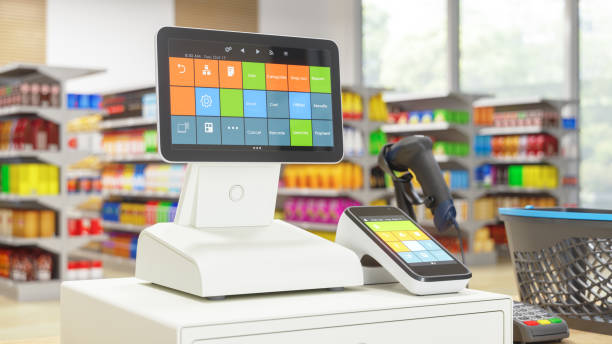
- May 12 2025
- SFI Solution Team
Transforming Retail Analytics Through POS Integration
In the current competitive retail environment, success is not merely determined by product quality or pricing; rather, data has emerged as the new currency. One of the most significant advancements in retail technology is the integration of Point of Sale (POS) systems, a robust solution that is transforming how businesses comprehend and react to customer behavior. By combining POS systems with sophisticated analytics tools, retailers can gain actionable insights, enhance decision-making, and foster long-term growth.
This blog delves into how POS integration is transforming retail analytics, its primary advantages, and the reasons why progressive retailers are emphasizing this digital transformation.
What Is POS Integration in Retail?
POS integration refers to the seamless connection of a point-of-sale system with other digital tools—such as inventory management software, customer relationship management (CRM), and business intelligence (BI) platforms. Instead of functioning in isolation, the POS system becomes part of a unified ecosystem that collects, shares, and analyzes data across multiple touchpoints.
This integration provides real-time access to vital business metrics, enabling retailers to monitor performance, identify trends, and respond proactively to market shifts.
The Rise of Retail Analytics
Retail analytics involves the use of data to gain insights into consumer behavior, sales trends, inventory levels, and operational performance. It helps retailers :
-
Optimize inventory management
-
Understand customer preferences
-
Improve in-store experiences
-
Forecast demand more accurately
-
Enhance marketing ROI
However, without integration, retailers often rely on fragmented data from siloed systems, leading to inefficiencies and missed opportunities.
How POS Integration Enhances Retail Analytics
Real-Time Data Access and Reporting
With POS integration, retailers can access real-time data from every transaction across multiple locations. This immediacy allows for :
-
On-the-fly sales performance analysis
-
Faster reaction to inventory shortages or surpluses
-
Immediate promotional impact assessment
Centralized Customer Insights
Integrated POS systems capture valuable customer data, including :
-
Purchase history
-
Preferred payment methods
-
Average transaction value
-
Frequency of visits
These insights feed into CRM platforms to create detailed customer profiles, allowing for personalized marketing campaigns and improved loyalty program management.
Smarter Inventory Management
By connecting POS data with inventory software, businesses gain :
-
Accurate stock level tracking
-
Automated reordering alerts
-
Better demand forecasting
Retailers can reduce overstocking or stockouts—common pain points that erode margins and customer satisfaction.
Enhanced Omnichannel Strategy
Today’s customers expect consistent experiences across channels. Integrated POS systems ensure that inventory, pricing, and customer data are synced across :
-
Physical stores
-
E-commerce platforms
-
Mobile apps
-
Social commerce outlets
This level of alignment allows businesses to execute effective omnichannel campaigns and maintain brand consistency.
Operational Efficiency and Reduced Errors
Manual data entry between systems increases the risk of human error. POS integration automates data flow, reducing :
-
Duplicate records
-
Mismatched pricing
-
Transaction discrepancies
This automation not only improves accuracy but frees up employees to focus on higher-value tasks.
Use Case : POS Integration in Action
Example : A mid-sized fashion retailer integrated their POS system with Google Analytics, Shopify, and Zoho CRM. The result?
-
22% increase in average transaction value
-
18% reduction in excess inventory
-
25% improvement in customer retention rates through personalized promotions
This success story illustrates how POS integration turns raw transaction data into a strategic growth driver.
Challenges and Considerations
While the benefits are substantial, POS integration also presents some challenges :
-
System compatibility : Ensuring the POS works seamlessly with other platforms
-
Data security : Handling sensitive customer and transaction data responsibly
-
Training requirements : Staff need to be familiar with new tools and workflows
To overcome these obstacles, retailers should choose scalable, cloud-based POS solutions that offer strong APIs and reliable support.
Future of Retail : Predictive and AI-Powered Analytics
The next frontier of retail analytics lies in predictive modeling and artificial intelligence (AI). When combined with POS integration, AI can :
-
Predict future purchasing patterns
-
Automate pricing strategies
-
Generate intelligent product recommendations
Retailers leveraging these advanced capabilities are not just reacting to trends—they’re staying ahead of them.
Conclusion
In an era where every transaction holds insights, POS integration is no longer optional – it’s essential. It empowers retailers to make smarter, data-driven decisions that enhance the customer experience, boost operational efficiency, and increase profitability.
Whether you’re operating a single storefront or managing a national chain, integrating your POS with analytics tools is the key to unlocking the full potential of your retail data.
Ready to Transform Your Retail Analytics?
Start by evaluating your current POS system. Look for integration-friendly features, cloud capabilities, and compatibility with your existing software stack. Partner with a technology provider who understands your business needs and offers tailored solutions.
Stay ahead. Stay data-driven.
If you’re ready to take the next step, contact us +1 (917) 900-1461 or +44 (330) 043-1353 today to learn how our POS integration solutions can help you unlock the full potential of your retail data.
Previous Post